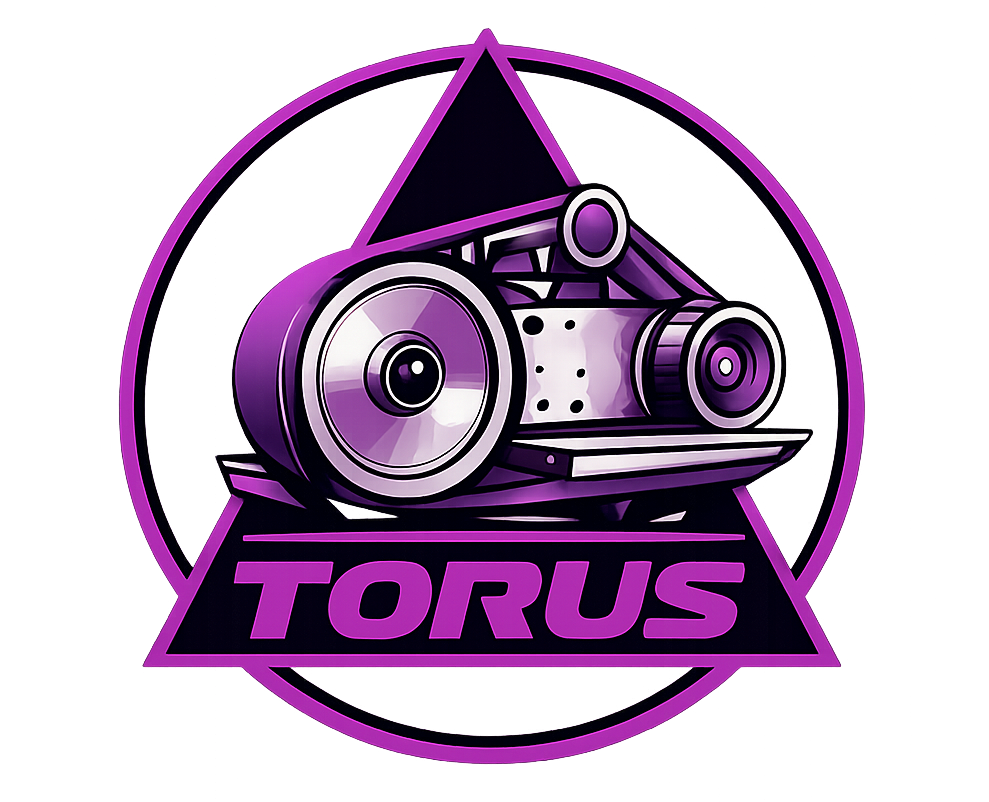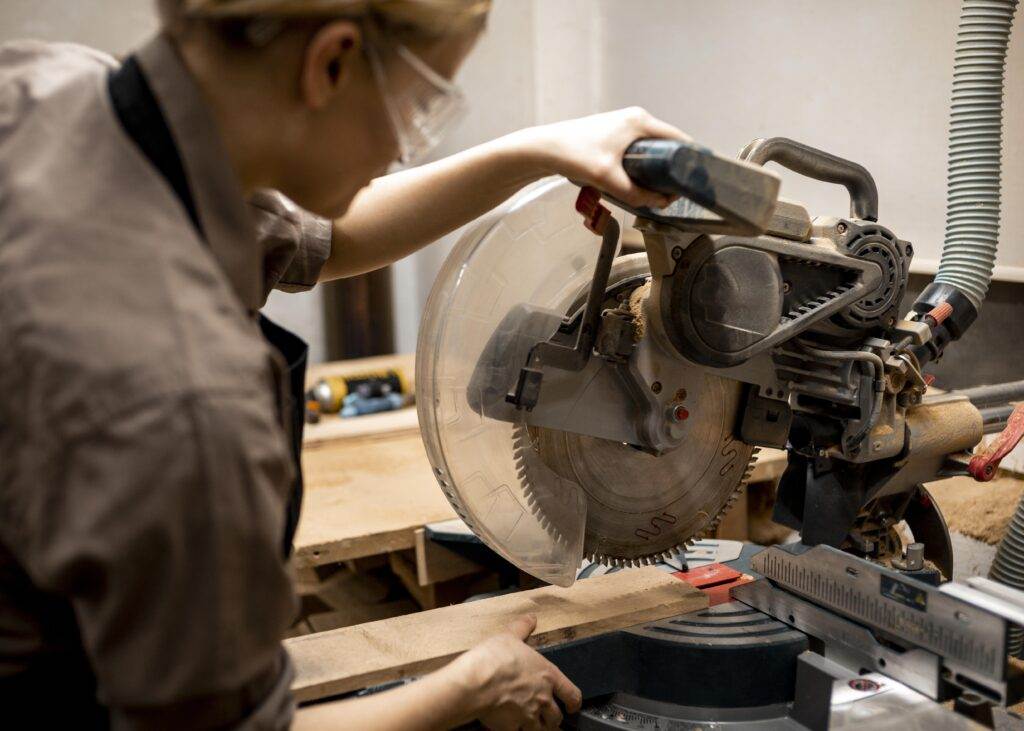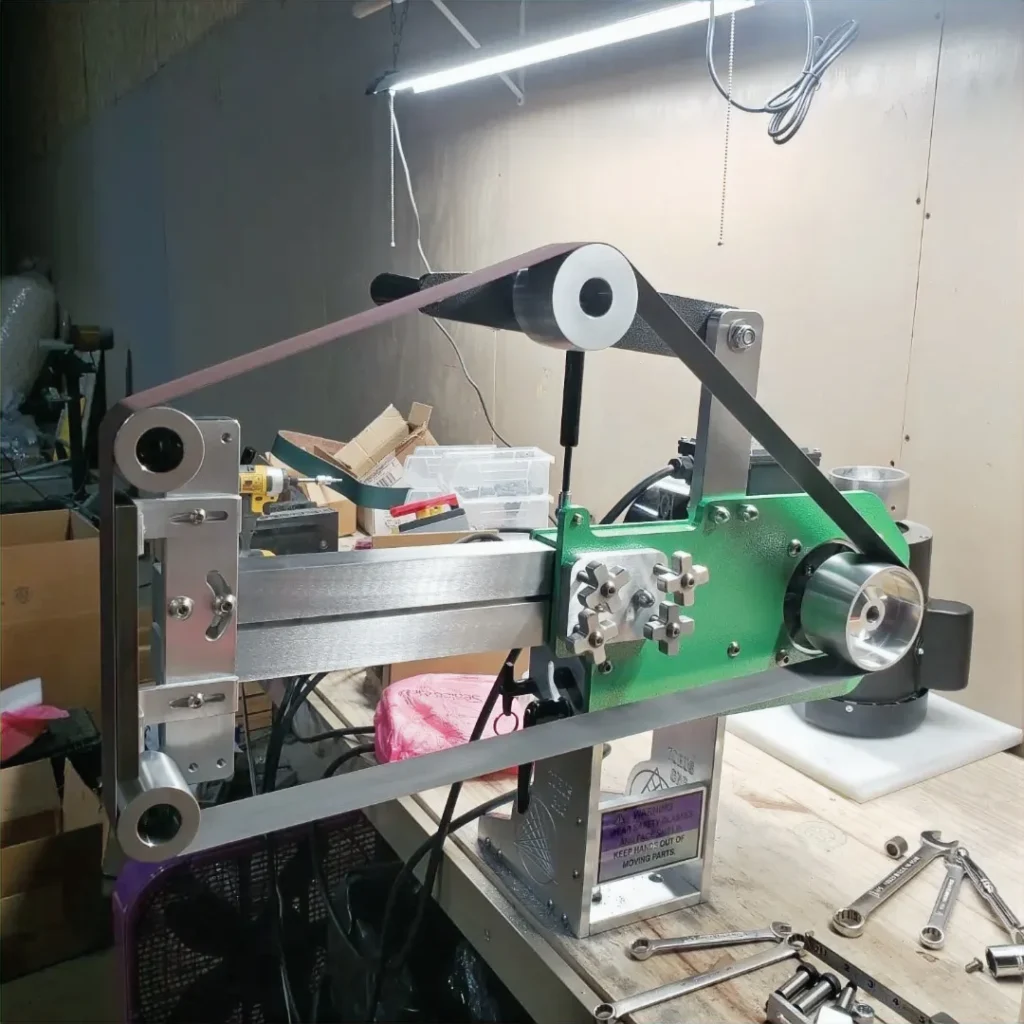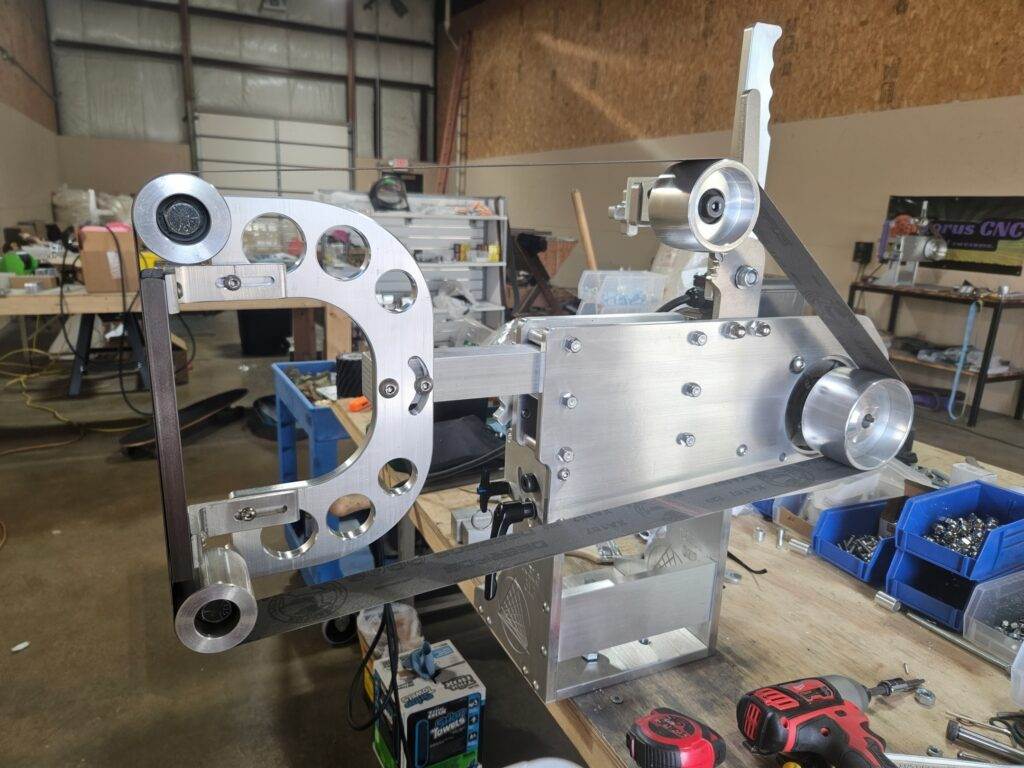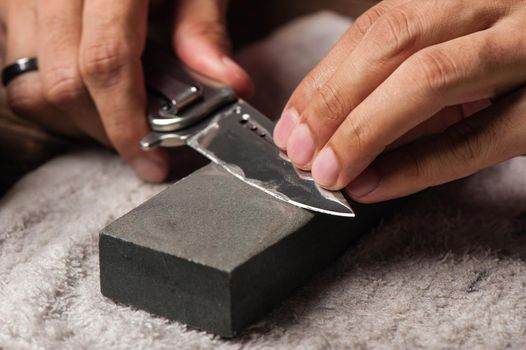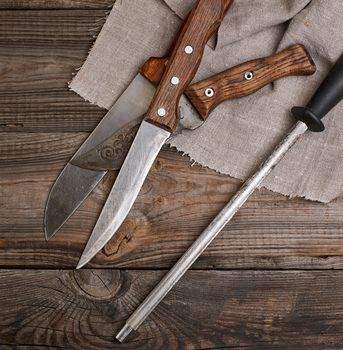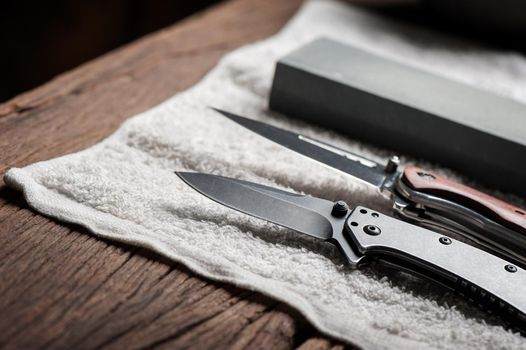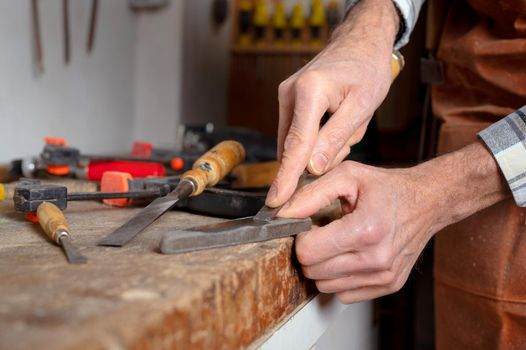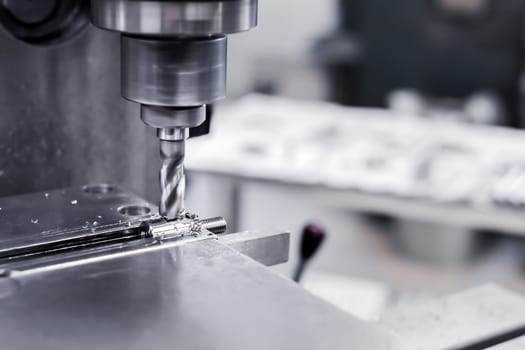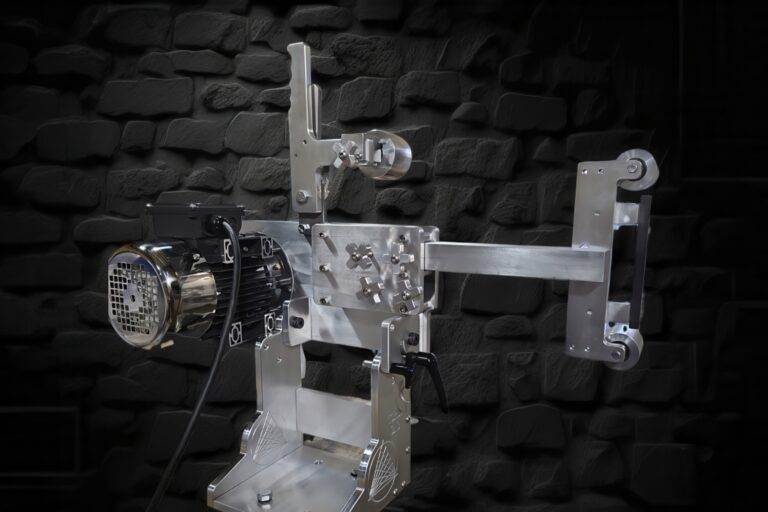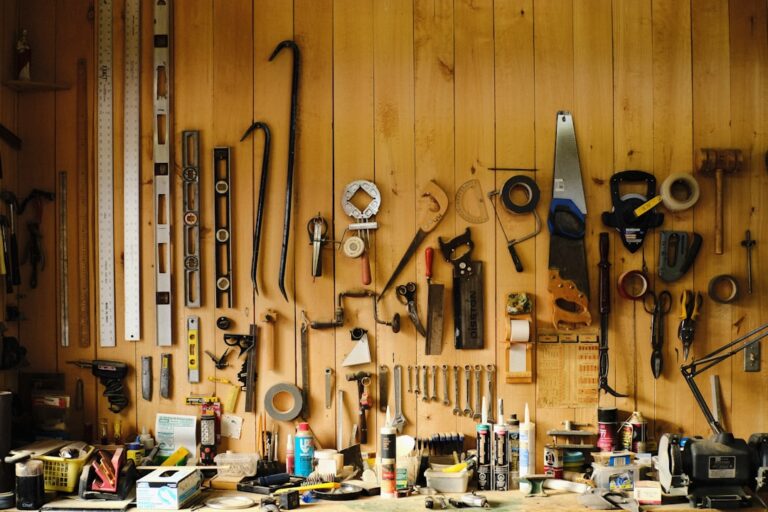Knife sharpening is an essential skill that enhances the performance and longevity of cutting tools. At its core, knife sharpening involves the removal of material from the blade to create a new edge. This process can be achieved through various methods, including manual sharpening with whetstones or honing rods, as well as mechanical sharpening using specialized equipment.
Understanding the anatomy of a knife is crucial for effective sharpening; the edge, bevel, and tip all play significant roles in how a knife performs. A well-sharpened knife not only cuts more efficiently but also ensures safety during use, as a dull blade can lead to accidents. The technique of sharpening involves several steps, including assessing the current condition of the blade, selecting the appropriate sharpening tool, and applying the right angle during the sharpening process.
For instance, most kitchen knives require a sharpening angle between 15 to 20 degrees. The choice of grit on sharpening stones or belts also matters; coarser grits are used for repairing damaged edges, while finer grits refine the edge for a polished finish. Mastering these fundamentals is essential for anyone looking to provide professional knife sharpening services.
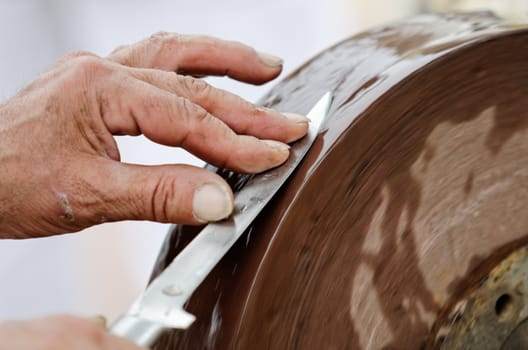
Key Takeaways
- Sharpening knives involves using a sharpening stone or other tools to create a sharp edge on the blade.
- A 2×72 grinder offers precision and speed in knife sharpening, making it a valuable tool for professional sharpeners.
- Setting up a knife sharpening business requires obtaining the necessary equipment and permits, as well as developing a pricing structure and business plan.
- Choosing the right location for your knife sharpening business involves considering factors such as foot traffic, accessibility, and competition.
- Marketing your knife sharpening business can be done through online platforms, local advertising, and networking with potential clients.
The Advantages of Using a 2×72 Grinder
Utilizing a 2×72 grinder for knife sharpening offers numerous advantages that can significantly enhance the efficiency and quality of the sharpening process. One of the primary benefits is the speed at which a blade can be sharpened. The powerful motor and wide belt surface allow for rapid material removal, making it possible to restore a dull knife to its original sharpness in a fraction of the time it would take with traditional methods.
This efficiency is particularly beneficial for professionals who need to sharpen multiple knives in a single session. Moreover, a 2×72 grinder provides versatility in terms of the types of belts that can be used. Different grits and materials are available, allowing for tailored sharpening based on the specific needs of each blade.
For example, one can start with a coarse belt to reshape the edge and then switch to finer belts for honing and polishing. This adaptability not only improves the quality of the sharpened edge but also allows for experimentation with different techniques and finishes, catering to a wider range of customer preferences.
Setting Up Your Knife Sharpening Business
Establishing a knife sharpening business requires careful planning and consideration of various factors. First and foremost, it is essential to develop a solid business plan that outlines your goals, target market, and operational strategies. This plan should include details about your services, pricing structure, and any unique selling propositions that set your business apart from competitors.
Additionally, consider the initial investment required for equipment, such as a 2×72 grinder, sharpening belts, and other necessary tools. Once you have a business plan in place, securing the right equipment is crucial. Investing in high-quality tools will not only improve your efficiency but also enhance the quality of your work.
A 2×72 grinder from TorusCNC is an excellent choice due to its robust construction and versatility. As you set up your workspace, ensure that it is organized and equipped with adequate lighting and ventilation to create a safe and comfortable environment for both you and your clients.
Choosing the Right Location for Your Business
| Location Factor | Metrics |
|---|---|
| Demographics | Population size, age distribution, income levels |
| Competition | Number of similar businesses in the area |
| Accessibility | Proximity to highways, public transportation, parking |
| Costs | Rent, utilities, taxes, and other expenses |
| Foot Traffic | Number of potential customers passing by |
Selecting an appropriate location for your knife sharpening business can significantly impact its success. Ideally, you want to choose a space that is easily accessible to your target market while also providing enough room for your equipment and operations. Consider areas with high foot traffic, such as near culinary schools, restaurants, or local markets where chefs and home cooks frequent.
Being in close proximity to potential clients can help generate word-of-mouth referrals and increase visibility. Additionally, think about whether you want to operate from a physical storefront or offer mobile services. A storefront can provide a dedicated space for clients to drop off their knives and engage with you directly, while mobile services can cater to those who prefer convenience.
If you opt for a mobile approach, ensure that your vehicle is equipped with all necessary tools, including your 2×72 grinder from TorusCNC, so you can provide high-quality sharpening on-site.
Marketing Your Knife Sharpening Business
Effective marketing strategies are essential for attracting clients to your knife sharpening business. Start by creating an online presence through a professional website that showcases your services, pricing, and contact information. Utilize social media platforms to engage with potential customers by sharing tips on knife maintenance, showcasing before-and-after photos of sharpened blades, and promoting any special offers or events.
Engaging content can help build trust and establish your expertise in the field. In addition to digital marketing efforts, consider traditional marketing methods such as flyers or business cards distributed in local culinary schools or restaurants. Networking within the culinary community can also yield valuable connections; attending food festivals or farmers’ markets can provide opportunities to demonstrate your skills and attract new clients.
Offering introductory discounts or referral bonuses can incentivize customers to try your services and spread the word about your business.
Building a Client Base
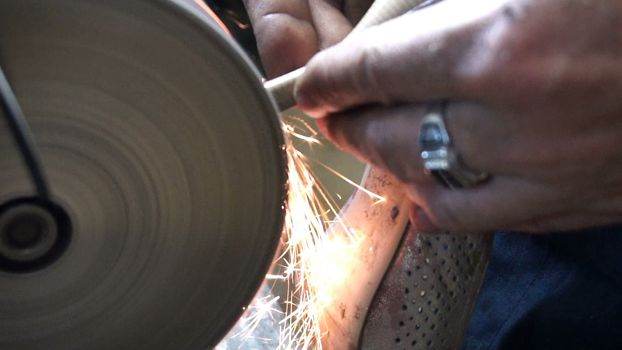
Building a loyal client base is crucial for the sustainability of your knife sharpening business. Start by providing exceptional service that exceeds customer expectations; this includes not only high-quality sharpening but also friendly communication and timely turnaround times. Encourage satisfied clients to leave reviews online or share their experiences with friends and family.
Positive testimonials can significantly influence potential customers’ decisions when choosing a knife sharpening service. Consider implementing a loyalty program that rewards repeat customers with discounts or free services after a certain number of visits. This not only encourages clients to return but also fosters a sense of community around your business.
Engaging with clients through follow-up communications can also help maintain relationships; sending reminders when it’s time for their next sharpening or offering seasonal promotions can keep your services top-of-mind.
Expanding Your Services
As your knife sharpening business grows, consider expanding your services to meet the diverse needs of your clientele. In addition to standard knife sharpening, you might explore offering specialized services such as serrated knife sharpening or scissors sharpening. Providing additional services can attract new customers who may not have initially considered using your business.
Furthermore, consider diversifying into related areas such as selling high-quality knives or kitchen tools alongside your sharpening services. Partnering with local chefs or culinary schools to offer workshops on knife maintenance could also enhance your reputation as an expert in the field while providing additional revenue streams. By continuously evaluating customer feedback and market trends, you can identify opportunities for growth that align with your brand.
Maintaining and Growing Your Business
To ensure long-term success in your knife sharpening business, it is essential to focus on both maintenance and growth strategies. Regularly assess your equipment’s performance and invest in maintenance for tools like your TorusCNC 2×72 grinder to ensure they remain in optimal condition. Staying updated on industry trends and advancements in sharpening techniques will also help you maintain a competitive edge.
Additionally, consider setting specific goals for growth each year—whether it’s increasing revenue by a certain percentage or expanding into new markets. Regularly review your business plan and adjust it based on performance metrics and customer feedback. Engaging with local communities through events or sponsorships can further enhance your visibility and reputation while fostering relationships that contribute to sustained growth in your knife sharpening business.
FAQs
What is a 2×72 grinder?
A 2×72 grinder is a type of belt grinder that uses a 2-inch by 72-inch belt for sharpening and shaping knives and other tools. It is a popular choice for professional knife makers and sharpeners due to its versatility and power.
How can a 2×72 grinder benefit a knife sharpening business?
A 2×72 grinder can benefit a knife sharpening business by providing the power and precision needed to sharpen and shape a wide variety of knives and tools. It allows for efficient and consistent sharpening, which can help improve the quality of the service provided to customers.
What are the key features to consider when choosing a 2×72 grinder for a knife sharpening business?
When choosing a 2×72 grinder for a knife sharpening business, it is important to consider factors such as motor power, belt speed, belt tracking system, and overall build quality. These features can impact the grinder’s performance and durability in a professional setting.
Can a 2×72 grinder be used for other purposes besides knife sharpening?
Yes, a 2×72 grinder can be used for a variety of purposes besides knife sharpening, including shaping metal, grinding tools, and creating custom knife designs. Its versatility makes it a valuable tool for businesses that work with metal and blades.
What are some safety considerations when using a 2×72 grinder in a knife sharpening business?
Safety considerations when using a 2×72 grinder in a knife sharpening business include wearing appropriate personal protective equipment, ensuring the grinder is properly grounded, and following proper grinding techniques to avoid accidents and injuries. It is important to prioritize safety when using any power tool in a professional setting.
